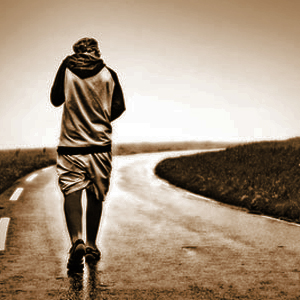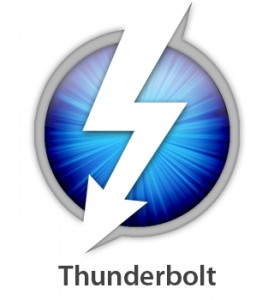The Fat Ass Chronicles: Part 1 – Burn, Baby, Burn!
8 min readTime sure does fly. There you were, making New Years resolutions about getting fit and joining gyms, all the while knowing you will probably quit sometime around the third week of January.
In this article, I will discuss the art of burning fat. There is a science to burning fat and many different ways to do it, but few of them actually produce positive results.
First, let me touch on what fat is. It is basically stored energy. When you consume excessive amounts of food, your body cannot process all the calories and release them as energy. In response, the body says, “Sweet action, I think I’ll go store that over here and use it later.” Unfortunately, we do not get to pick where it gets stored and, in turn, baby got back… and legs… and thighs… and stomach.
For the body to start burning fat, it must get a sufficient amount of oxygen. For the oxygen to be used, activity must be maintained for a decent amount of time – which, in my book, means anywhere from 30 to 45 minutes of cardio – in order to get a substantial amount of fat burning achieved. Maximum time for the hardcore peeps is around one full hour of non-stop cardio. As a warning, which should be common sense, do not aim for the maximum until you’ve worked your way up the ladder.
In order to burn fat, your body must have a calorie deficit. Two ways to create this deficit are to decrease your caloric intake (aka dieting) and to increase the amount of calories you are burning (aka: exercising). Both of these methods are helpful, but I believe the better, more efficient way to is to burn the fat off through exercise.
It is much more profitable to burn the fat and feed the muscles with healthy nutrition than to starve the fat with a low calorie diet. In fact, eating more of the right foods, combined with exercise, is better than simply eating less. Lowering your caloric intake level to starvation levels without exercise will slow down your metabolism and decrease your lean body mass. Bad idea. Exercise enables you to create the caloric deficit and burn the fat while maintaining or increasing your metabolism.
What is the most efficient method of exercise? Aerobic exercise. This includes riding the stationary bike, running, walking, and jogging. Personally, I prefer and recommend the stationary bike because of its low impact on the body parts (knees, joints) compared with running or even walking.
If you participate in an intermittent activity, it is actually an anaerobic exercise, which means you are going to be burning the sugars in your body instead of the fat. Short bursts of activity attack the carbohydrates and burn them for fuel. So when you are doing things like raking leaves or playing golf, you might think you are burning fat, but primarily you are burning sugar. Fat burning is what you want.
While your body is complicated, it will respond appropriately to how you treat it. There is power in knowing how your body uses fat as this allows you to adjust your workout accordingly and start kicking ass.
It is time to break it down so you can figure out how best to start burning the fat. Two primary factors to keep in mind are your heart rate and your fat burning zone. The first thing you need to do is subtract your current age from 220. The result is your base number with which to figure out your fat burning zone. So, if you are 20 years old, you take your age and subtract it from 220, giving you a base of 200. This number is called the Estimated Maximum Heart Rate (EMHR) – your heart rate should never exceed your EMHR or even get too close to it. From that figure, you need to do three to four simple math calculations to figure out your fat burning zone.
Generally speaking, your fat burning zone is anywhere from 60% to 80% of your EMHR. So, 60% of 200 gives you a result of 120 beats per minute while exercising. 70% results in 140 beats per minute while exercising, and at 80%, that gives you a result of 160 beats per minute while exercising. So, for my example here, this person needs to be anywhere from 120 to 160 beats per minute during their cardio exercises in order to burn fat.
To give you a good example of just about how much you will be exerting yourself at each percentage, I made up a small chart:
% of EMHR Difficulty
60-65% moderate
65-70% somewhat hard
70-75% moderately hard
75-80% hard
As this amateur chart shows, the more you push your body, the more it is going to respond. When you work out moderately hard on a more difficult training level on the stationary bike, you have a faster heart rate, and in turn, burn more fat.
Aside from taking your pulse to check your heart rate, (which is advisable until you figure out what level of exertion gets you to a certain rate), the other way to tell if you are in a fat burning zone is the ‘talk test.’ When you are doing your cardio, you should be breathing heavy. When I say heavy, I don’t mean you can barely talk because you are so out of breath. The talk test means that you should be able to carry on a conversation with somebody while exercising to where you can at least finish an entire sentence without gasping for air. If you are gasping, then you are most likely working outside of your fat burning zone and doing harm to yourself. If talking is easy and you are not breathing hard at all, then you are probably working under your fat burning zone and need to pick up the pace.
Did I mention you should be sweating? Yes, sweating is good, it is essential to releasing the toxins in your body and assisting weight loss. Traditionally speaking, if you have a decent amount of weight to lose, the first 10 to 15 pounds you lose are going to be primarily water weight. So the more you sweat, the better. Just make sure to balance that out by drinking plenty of water. Most people think that drinking too much water will bloat you up, but the opposite is actually true. The more water you drink, the better able your body is to perform the tasks you are handing to it (like burning fat).
How much cardio should I do? Well, it all depends on what you hope to achieve. What I’m about to say here assumes you are eating a healthy diet, which I will cover in my next article. If you are trying to lose weight at a moderate pace, do aerobic exercise three times a week for about 30 to 45 minutes. With this frequency, doing a moderate work out, you can expect to lose one to two pounds per week. If you are attempting to burn the fat at a fairly good pace, do the cardio five times a week, which should give you about a three to four pound loss each week.
Now, if you are really wanting to kick your ass in gear, then do cardio five times a week, for 30 to 45 minutes, but do it twice a day – once in the morning, and once at night – thus giving you anywhere from 60 to 90 minutes a day in cardio. “But Mark, I just don’t have time.” Well, if you want the results, you will find the time. It’s that simple. If you don’t, you won’t.
Here’s the carrot – doing this sort of cardio workout twice a day will give you (drum roll) about a six to eight pound loss per week. Yes, I said it, and I’m not backing down from it, because I’ve done it. If I can, you can. Remember, all of these figures are considering that you are actually following a healthy diet to work side by side with your workouts.
I have saved the best for last with something that should fill all your loins with collective glee. What if I told you that you could increase the fat burning effects of cardio anywhere from two to three times the normal rate, by doing one simple thing? Interested?
Four words: Early Morning Fasted Cardio.
It’s exactly what it sounds like: early morning cardio on a completely empty stomach. It’s good to do cardio at any time, but if you want maximum results from the 30 to 60 minutes of free time you have every day, then do your cardio in the morning before you have eaten breakfast.
Here are some reasons why early morning cardio works so well. There is something in your body called glycogen – basically the storage center for glucose. When glycogen levels are low, your body will burn fat at a much faster rate. When a typical person has had a good six to eight hours of sleep, their glycogen levels drop dramatically. Simply put, there is less glucose in your bloodstream when you wake up in the morning.
When you start working out, your body almost immediately begins burning fat. Instead of your body having to work to burn the carbohydrates at first, (on a full stomach or whatever is in there) you are going straight to a fat burn for 30 to 45 minutes. If you eat before your morning workout, your insulin levels rise, and your body has to burn off what you just ate before it is able to tap into the stored body fat you have. Again, that is precisely what fat is: stored energy in your body that you put there which can only be taken out when your body is in direct need of energy.
Doing the cardio in the morning actually gives you the ‘after burn’ effect, which means your metabolism is elevated immediately afterwards and stays that way for a period of time. This is why you feel energized for a period of time after working out. It might not feel the best while you are working out, but most people will testify that you feel like a million bucks afterwards. I would recommend starting out at 30 minutes of cardio and then work your way up gradually (since it is early in the morning and you haven’t eaten anything). Nutrition is also vitally important, so make sure to eat a nutritious meal after you work out in the morning.
Once you get down much closer to your goal weight, you can cut back on the cardio because it is not as necessary as when you started. Instead of doing the hardcore cardio workouts, just do 15 to 20 minutes, three to four times a week. Provided you are eating healthy and are fairly close to where you need to be, it is plenty to give you all the benefits you are looking for.
I thought about joining everything together into one or two articles, but I don’t feel I would truly be doing each one justice if I did. Instead, I am going to take various elements of diet and health one at a time.
Next week, I will discuss the basics of a healthy diet that will compliment the ideas in this article.







What happens to the calories which would have normally been used to replenish your glycogen supply?
http://well.blogs.nytimes.com/2009/11/04/phys-ed-why-doesnt-exercise-lead-to-weight-loss/